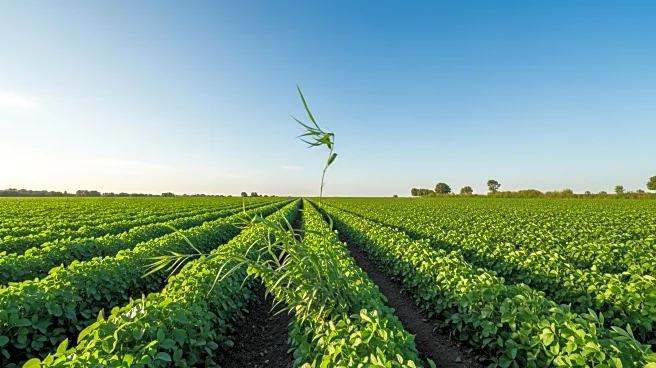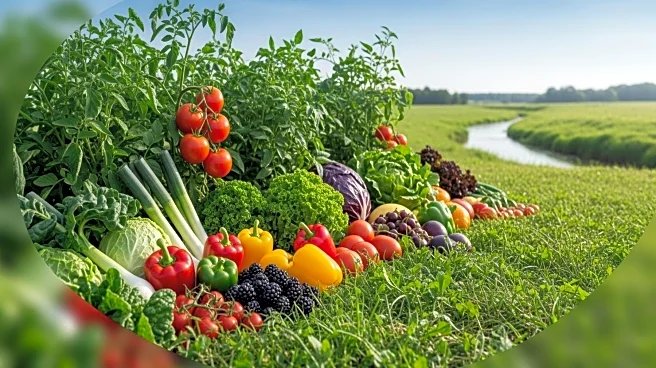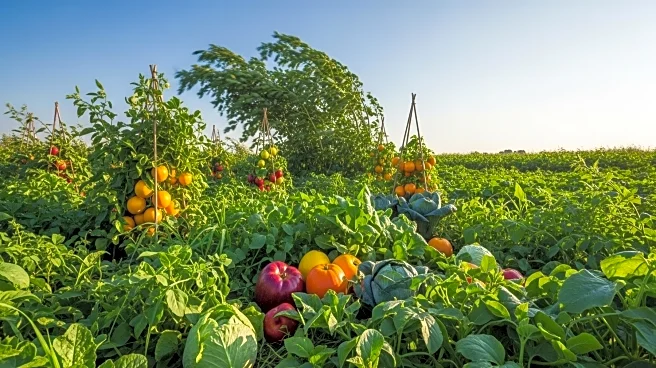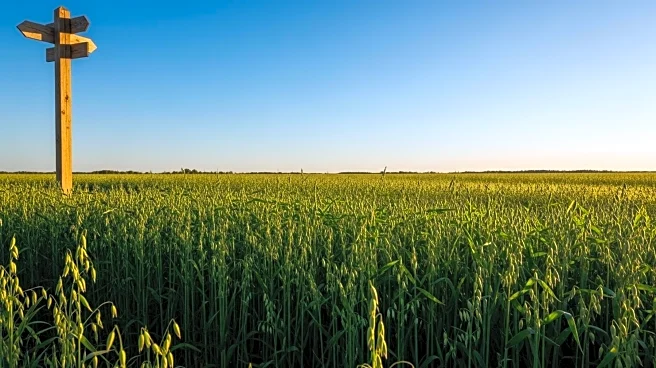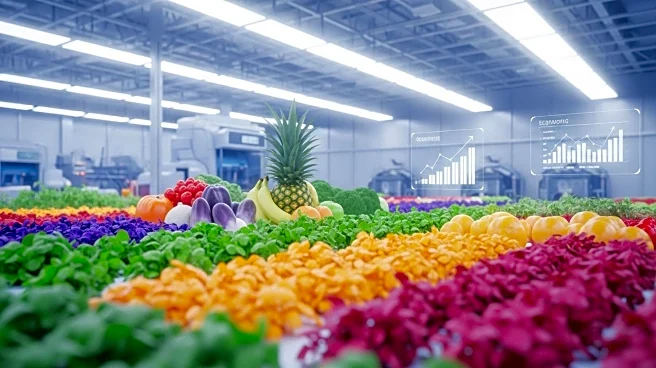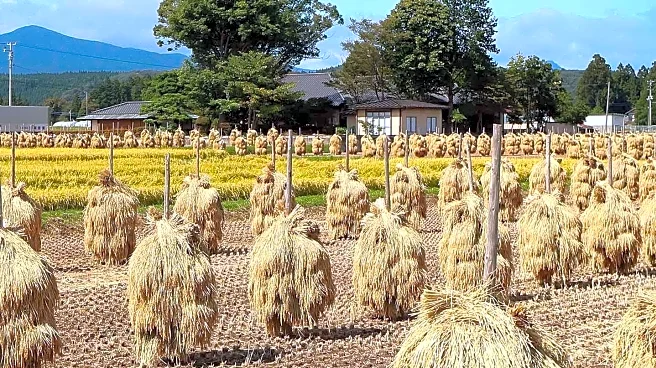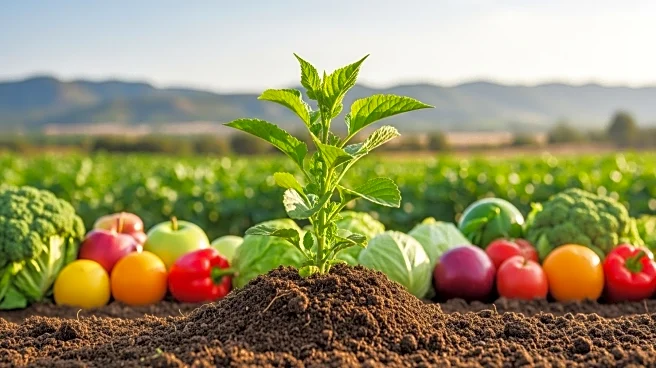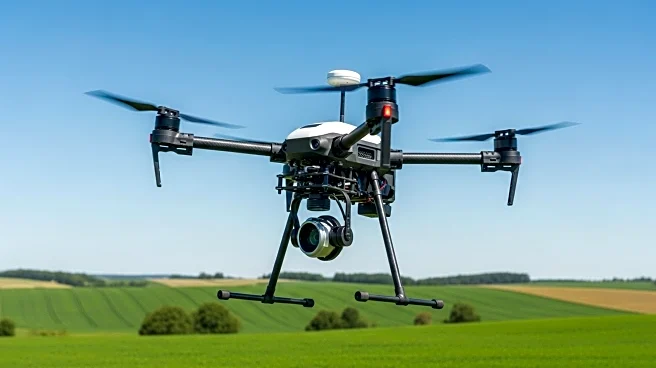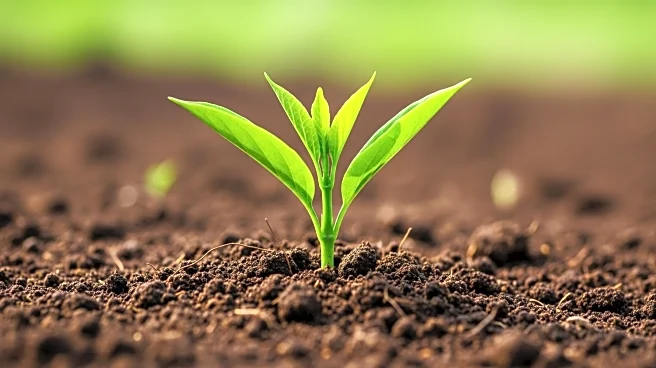What's Happening?
The global sustainable agriculture market is projected to reach over USD 59.3 billion by 2034, with a compound annual growth rate (CAGR) of 10.7%. Sustainable agriculture involves farming systems that prioritize environmental responsibility, aiming to minimize ecological harm while promoting long-term productivity. Regenerative agriculture, a subset of sustainable agriculture, focuses on improving soil health and revitalizing farm ecosystems through practices like water conservation and biodiversity enhancement. Despite growing recognition of its benefits, the market faces challenges such as limited public awareness, high initial investment costs, and a shortage of skilled labor.
Why It's Important?
The shift towards sustainable agriculture is driven by increasing carbon emissions and declining arable land availability, necessitating a transition from conventional farming methods. This transition is crucial for reducing greenhouse gas emissions, improving soil fertility, and optimizing water usage, which are essential for meeting the needs of a growing global population. North America leads the market, supported by corporate engagement and major industry players, while the Asia Pacific region is poised for growth due to governmental support and public consciousness around environmental stewardship.
What's Next?
The market is expected to continue its growth trajectory, with North America maintaining its dominance. The Asia Pacific region is likely to see robust growth due to its vast agricultural resources and population base. Future opportunities may arise from increased governmental support for innovative farming techniques and rising public awareness of soil regeneration and environmental stewardship.
Beyond the Headlines
The development of sustainable agriculture practices has ethical and cultural implications, as it promotes environmental stewardship and long-term productivity. The integration of advanced agricultural equipment and techniques requires skilled labor and technical expertise, highlighting the need for education and training in sustainable farming methods.
